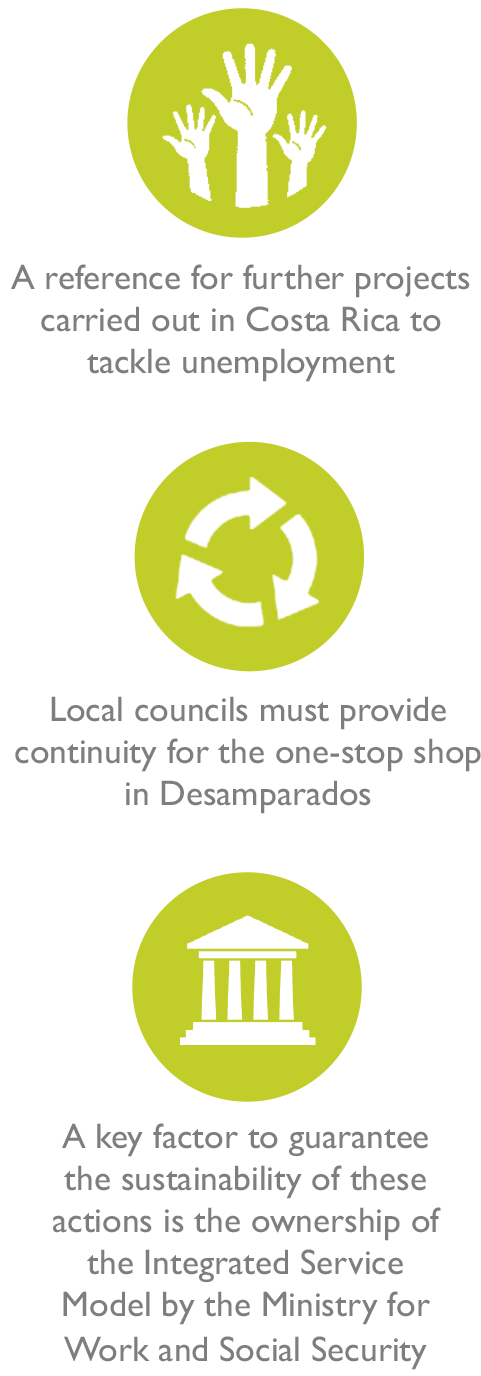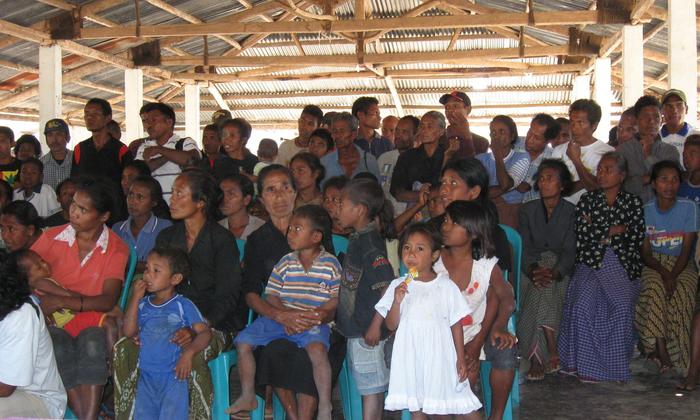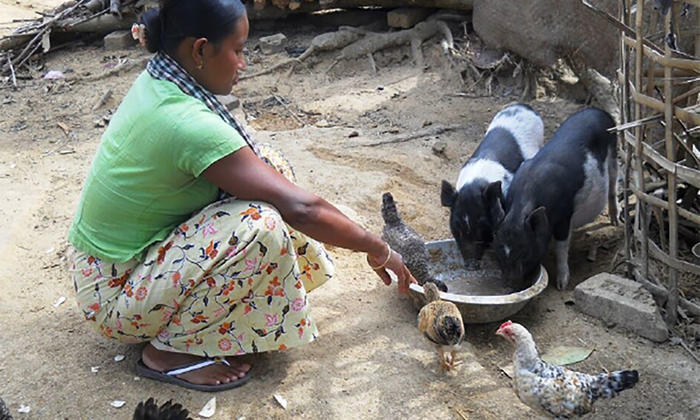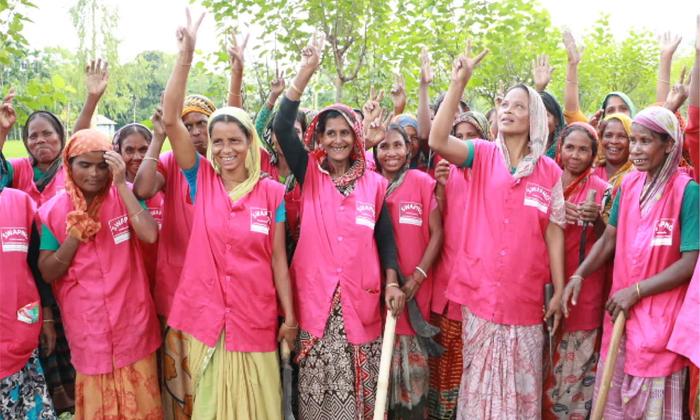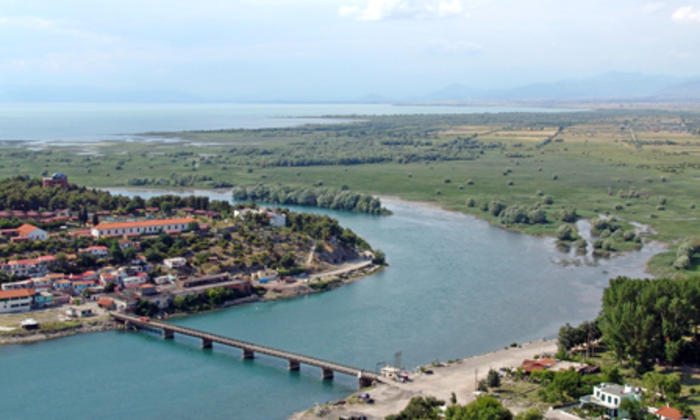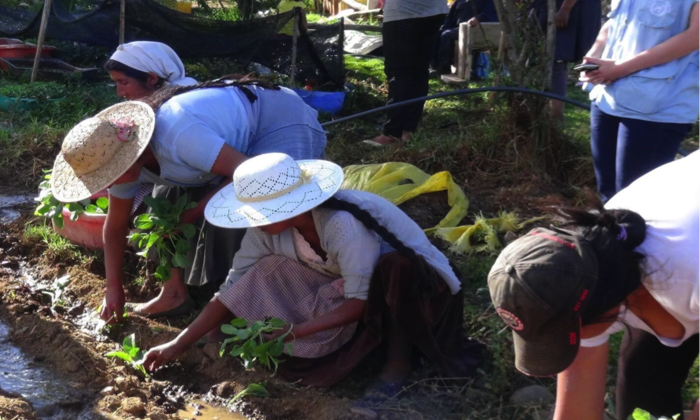The integrated service model of the “one-stop shops” provided young people in Upala and Desamparados with a way to access opportunities and services to improve their work and enterprise training
Case study
Youth employment and migration in Costa Rica

SDGs ADDRESSED
This case study is based on lessons from the joint programme, Costa Rica: youth, employment and migration: a one-stop shop for youth employment
Read more
Chapters
Project Partners


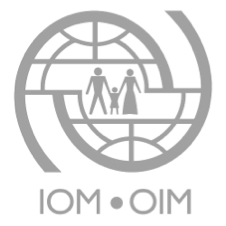


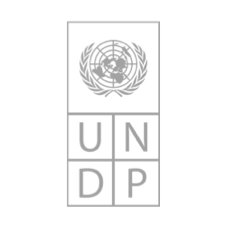

1. SUMMARY
The programme focused on providing employment intermediary services and training for work in Costa Rica. This was achieved through the so-called “one-stop shops” for youth employment in two communities: Desamparados and Upala. These services were directed towards young people aged between 15 and 35, with particular emphasis on women and those in vulnerable situations, benefiting around 9,000 people. At the same time, the project aimed to strengthen coordination and coherence with national policies on addressing unemployment. As a result of the success of the programme’s youth-focus model, the Ministry of Labour and Social Security replicated 16 one-stop shops in ten municipalities as part of the national youth employment strategy EMPLEATE. A central one-stop shop was also established at the National Directorate for Employment within the Costa Rican Ministry of Labour.
The purpose of this case study is to showcase learning, results and practical examples to reinforce awareness of development programmes that promote inclusive economic growth.

‘Circo al Sur’ was one of the cultural activities developed by the programme
2. THE SITUATION
The programme was set up in response to the need to promote employment in Costa Rica. According to data from the Observatorio de la Persona Joven (Observatory of the Young Person), approximately 21 out of every 100 young people in Costa Rica were living in poverty in 2009. This indicates the level of exclusion from the labour market faced by young people. Moreover, unemployment in Costa Rica has increased over the last few years. According to data reported by the National Institute for Statistics and Censuses, the level of unemployment rose from 7.3 per cent in 2010 to 7.7 per cent in 2013, while poverty rose from 21.3 per cent to 21.6 per cent in the same period.
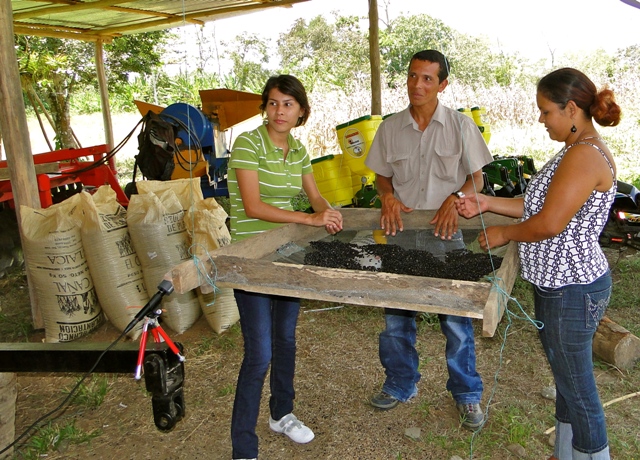
The programme focused on providing employment intermediary services and training for work to young people aged between 15 and 35
In 2010, an International Labour Organization (ILO) study on youth employment trends identified actions taken in each country to improve this group’s capacities. In Costa Rica, the only actions identified related to training for young people, such as an increase in the provision of grants for students and to secondary schools. In this context, government actions are focused on:
- Creating policies and programmes to activate the labour market for young people.
- Social protection strategies for young people.
- Creating social dialogue and alliances between government, employer organizations, syndicates and other groups.
- Providing more information on the labour market by installing analysis and information systems and monitoring employment rights.
According to the second Report on Migration and Integration in 2012, Costa Rica’s migration dynamics also play a determining role in the approach to youth employment. The young migrant population aged between 20 and 39 represents the largest group, whose main motivation is the quest for better economic conditions.
3. STRATEGY
The programme was designed to address three problems faced by young Costa Ricans looking for work: 1) lack of structured information on education and work opportunities; 2) insufficient education and training; and 3) weak public policies on unemployment.
Actions were implemented in two of the country’s cantons: Desamparados and Upala. The first is an area with a high marginal-urban population density, while Upala is a rural frontier canton. Both cantons have high levels of poverty and large numbers of young migrants. These problems were addressed using a two-pronged strategy:
- Implementation of an Integrated Service Model through “one-stop shops” for youth employment in Desamparados and Upala. These service centres provided young people with a way to access opportunities and services to improve their work and enterprise training.
- Institutional strengthening in Costa Rica in the fight against unemployment, through the development of institutional capacities and coordination with relevant national policies. Programme actions were linked with the National Development Plan, the Plan for the Promotion of Youth Employment and the national objective on integrating the migrant population, as set out in article 3 of the General Law on Migration N8764.
4. RESULTS AND IMPACT
The skills developed as a result of the programme helped to improve the employability of the young people who participated. A research study on the labour market for young people in both cantons was carried out at the outset. This meant the local governments now had accurate information on work opportunities and prospects. Three one-stop shops were set up, two in Desamparados and one in Upala, establishing an information system on job availability and employment services, and information on the situation for young people. This also facilitated identification of the young people’s strengths and weaknesses. A service protocol was also established to strengthen the capacities of these one-stop shops. Lastly, a manual called the “ABC of the one-stop shop” was systematised so the one-stop shops could be replicated in other cantons. The manual contains the steps taken from initial design through to set up and the Integrated Service Model.
A business incubation and acceleration programme for young people was also developed. This programme provided them with tuition and training on how to develop their businesses. These enterprise actions were in line with the National Policy on entrepreneurship, “Costa Rica Emprende”. In the course of this activity, 994 young people from Desamparados and Upala advanced their business plans using the methodology of the Colectivo Integral de Desarrollo, setting up over 50 businesses. 129 young people also received finance for their enterprises. Meanwhile 89 local tutors were given training in developing business plans, in both Desamparados and Upala. In addition, 160 staff members from the Ministry of Agriculture and Livestock were selected to promote enterprise among young people in rural areas.
To increase the integration of young migrants into the workforce, a specific procedure for specialised support was developed and the Ruta para la Regularización de la Condición Migratoria (Pathway for the Regularisation of Migrant Status) was duly implemented. This is a useful instrument for those authorities responsible for working with migrants with irregular status. A change in institutional culture was also achieved through two projects run by the Costa Rican Directorate of Migration and Foreign Affairs: Entre Vecinos (Among Neighbours) and Rutas para la Integración (Integration Pathways). These projects included sensitisation campaigns on the rights of young migrants and promotion of the Interculturality Manual. 1,081 young migrants received mentoring in the process of regularising their situation and access to services that improved their quality of life. 210 teachers from the Ministry of Public Education and 90 Social Work and Counselling teachers from the Instituto Nacional de Aprendizaje were trained in dealing with interculturality in the classroom.
The Technical Standard for Professional Competence was developed with a view to strengthening capacities. This model helped the Ministry for Public Education to adapt the provision of technical training and provide information to educational institutions. Working in coordination with the institutions involved, two education centres were set up to teach Information and Communication Technology (IT) to the most vulnerable young people through a mobile unit with 12 laptops. 308 young people also improved their level of English through courses run by the Fundación Costa Rica Multibilingüe, the Instituto Nacional de Aprendizaje (INA) and the Cuerpo de Paz. The INA also provided training on the management of new information technology to a total of 207 young people from Desamparados and Upala.
A key factor to guarantee the sustainability of these actions is the ownership of the Integrated Service Model by the Ministry for Work and Social Security. This model was replicated in ten municipalities (16 one-stop shops) under the framework of the national strategy EMPLEATE. Using this strategy, some 6,000 young people benefited from work orientation and employment intermediary services. 39 strategic alliances were signed with the private sector to determine market needs and include young people in their selection processes.
The participants organised themselves into 25 youth groups supported by the programme, taking a leading role in these processes. Following the intervention, these young people have a better knowledge of the different opportunities at their disposal to improve their access to employment and their employability, and are empowered to demand them.
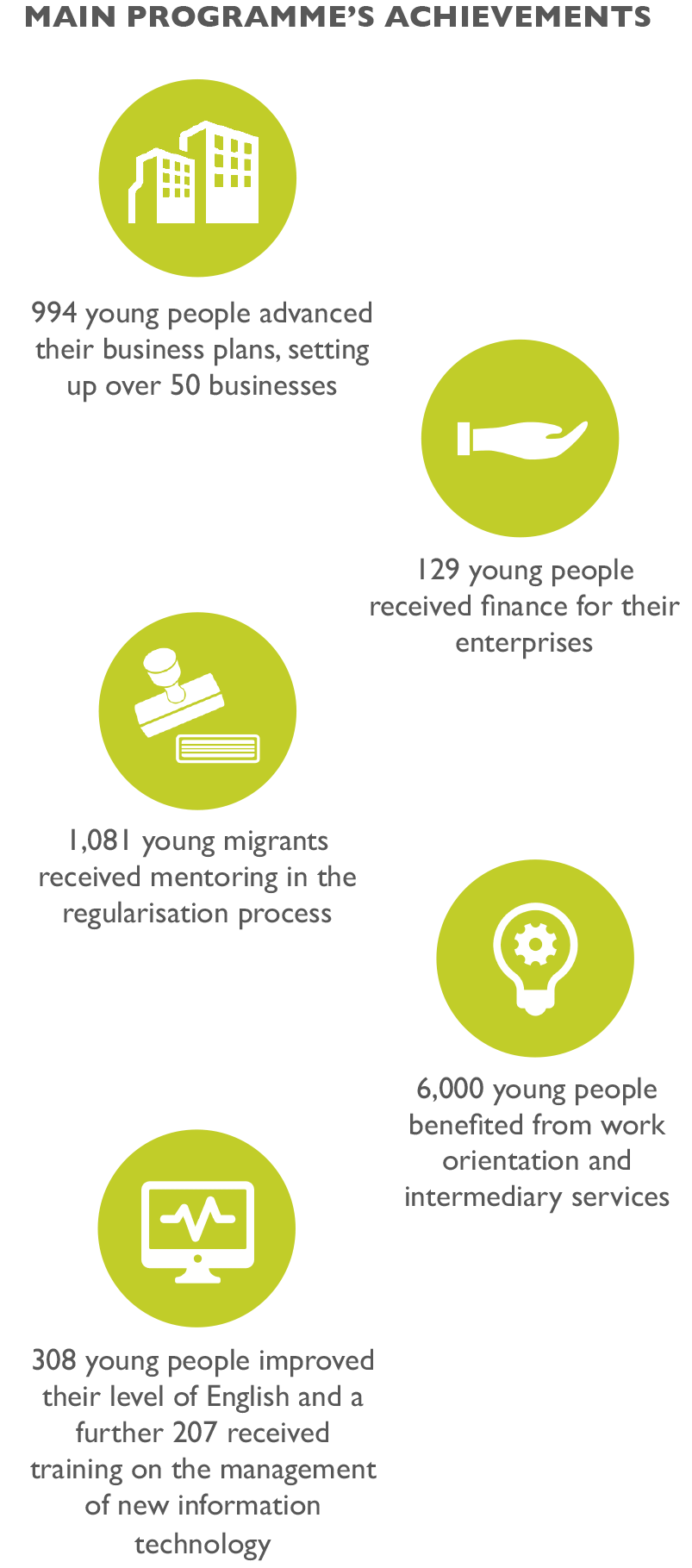
5. CHALLENGES
- Although the participation of different United Nations agencies was found to be a very effective multidimensional methodology in terms of results, the large number of agencies taking part in this intervention led to incompatibilities and communication problems. There were delays in payments for resources, which made it difficult to carry out the planned activities in the proposed time frame. This clearly demonstrated the need to design programmes with a smaller number of agencies (a maximum of 3 or 4) and to set up a joint administrative agenda defining shared channels and procedures in order to reduce costs and manage the project in the most efficient way. There needs to be a guarantee from the outset that programmes have a well-defined communication strategy between the stakeholders, which affords all of the recipients a deeper understanding than is provided by occasional promotional events. At the same time, the programme’s national coordinating body must be equipped with effective mechanisms to insist that each of the agencies fulfil its agreed commitments in order to guarantee the success of the programmes.
- The planning processes must involve all participating stakeholders. In this case, the local governments were not involved as priority partners when the programme was set up, which led to difficulties in incorporating their needs, responsibilities and ability to respond.
- The intervention suffered a series of difficulties in carrying out actions within the canton areas, even with the support of local institutions, as they could not be carried out in the required time frame nor under the conditions proposed in the design because the institutional response capacity was not taken into account in designing the activities.
- The lack of seed capital to finance new enterprises weakened the implementation and development of business ideas. For this reason, support was given to setting up a fund to finance enterprises through two communal credit companies in Desamparados and two in Upala, to offer more favourable conditions than the market and support the development of youth enterprises.
- One of the difficulties unconnected to the project which must be highlighted was the change of government, which meant a change of authorities and caused delays in effective coordination with institutional partners, who in some cases were not taken into account in the intervention but whose inclusion after the change in administration became essential.

6. LESSONS LEARNED
- The programme on youth, employment and migration implemented in Costa Rica constitutes a successful example of the capacity and impact of the United Nations system when its agencies work in a coordinated multidimensional way. Each agency contributed its own knowledge and experience. However, in order for the intervention to be successful it is very important for the roles of the different agencies to be made clear and for agreements to be established around the common objectives, thus providing mutual learning for the agencies and linked institutions.
- It is important to establish opportunities for meetings and dialogue between the various stakeholders to align expectations, priorities and needs relating to the proposed outcomes and also to avoid any duplication. These opportunities for exchange must involve the beneficiaries and the stakeholders implementing the actions. This exercise is also beneficial for United Nations agencies as a way to improve the coordination of joint efforts. It is essential to encourage the active participation of beneficiaries when developing strategies, methodologies and processes to ensure acceptance and ownership of the projects. This element of ownership is absolutely vital for the sustainability of the actions. Nothing must be “imposed”, and the leadership capabilities of local stakeholders must be fostered, since these are the people who will drive the project’s progress.
- In order to ensure greater ownership and sustainability, it is important for the development programmes to complement ongoing national strategies or established public policies.
- In terms of developing new businesses, the provision of financial resources must be accompanied by a strengthening of capacities. These two sides of the same coin facilitate the financial sustainability of the businesses and their incorporation into productive chains.
- Different methodologies must be applied depending on the current situation of the population. During the programme it was necessary to use different methods in Upala (rural) and Desamparados (urban-rural) to achieve similar objectives, due to the specific characteristics of each canton. The term “community” is often used as though it represents a homogeneous, clearly defined structure, but in reality it conceals a range of individual interests in terms of financial position, ethnicity, and gender and age balance. It is essential to bear these complexities in mind when approaching communities and not to start out from false suppositions. Differences were found in these two communities in areas such as access to work and education, migration and relocation opportunities.
- It is important to involve the private sector in programmes for inclusive economic growth. The participation of this sector in the various rounds of business discussions provided an opportunity to promote and develop business ideas and make connections with supporting resources to put them into practice. It enabled young people to obtain information and evaluation directly from their potential partners, buyers and employers.
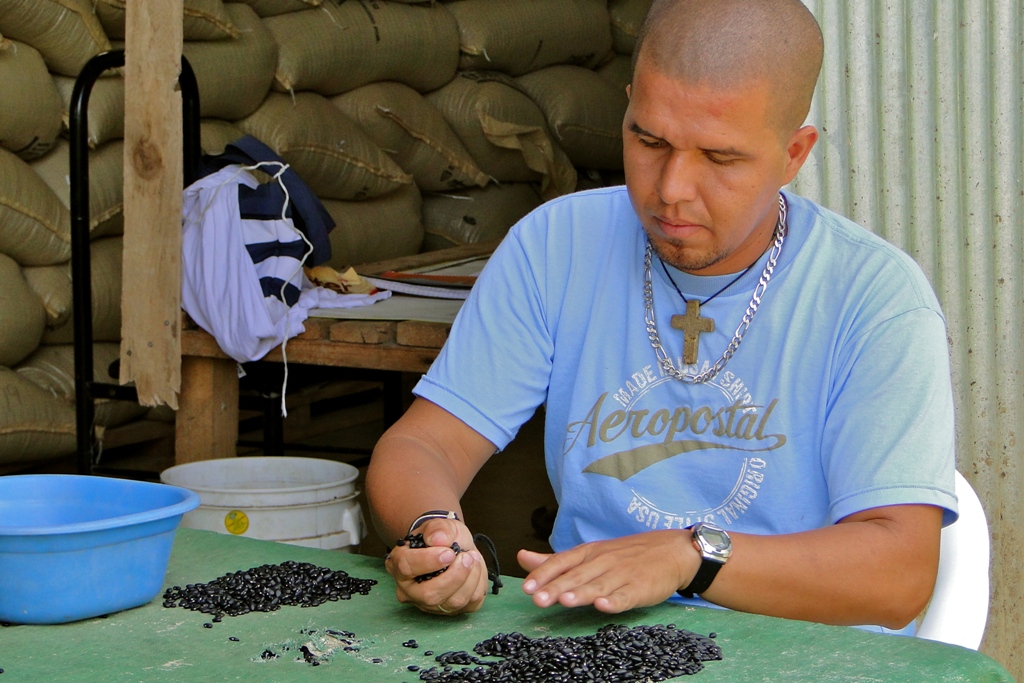
The skills developed as a result of the programme helped to improve the employability of the young people who participated
7. SUSTAINABILITY AND POTENTIAL FOR REPLICATION
The training and development models for businesses launched can serve as a point of reference for further projects carried out in Costa Rica to tackle unemployment, and are also applicable to other countries. The production of the “ABC of the One-stop Shop” as a practical guide for replicating the one-stop shops, which can be adapted to other contexts, is an added value for replicating the intervention.
To ensure the sustainability of the actions being promoted, local councils must provide continuity for the one-stop shop in Desamparados through the Unit for Children, Adolescents and Young People, and in Upala through the Socio-Educational Management Unit. There must be a guarantee that the concept of the one-stop shop will be fully integrated into the planning, the organic structure and the regular municipal budget on a permanent basis. Local governments have developed their own processes to integrate the one-stop shops into their own structure and municipal budget.
A key factor to guarantee the sustainability of these actions is the ownership of the Integrated Service Model by the Ministry for Work and Social Security, which replicated the model in ten municipalities (16 one-stop shops) under the framework of the national youth employment strategy EMPLEATE.
